Automated Ice Reservoirs (AIRs) for Climate-Resilient Water Security in High-Altitude Communities
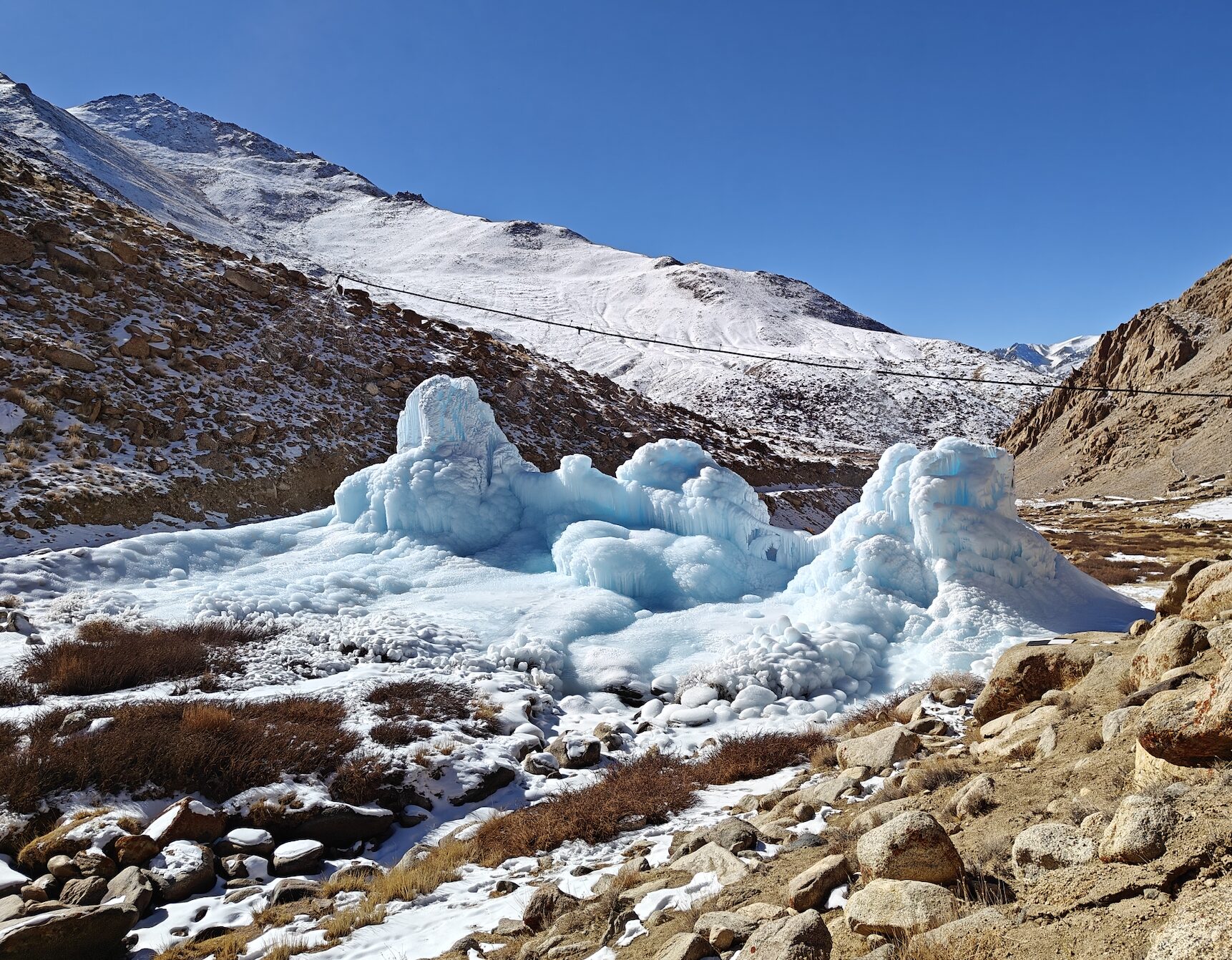
Summary
Automated Ice Reservoirs (AIRs) represent a revolutionary advancement in high-altitude water management, combining traditional ice reservoir knowledge with cutting-edge automation technology. Building upon the pioneering work of Padmashree Chewang Norphel (ice terraces) and Magsaysay awardee Sonam Wangchuk (ice stupas), our solution addresses critical water scarcity during spring sowing seasons when agricultural communities face their most severe shortages.
The AIR system utilizes intelligent automation to optimize ice formation through real-time monitoring of weather and pipeline conditions. Our custom-designed Sensor Conductor PCB functions as the system’s brain, processing sensor inputs (air temperature, humidity, wind speed, water temperature, and pressure) through advanced algorithms to determine optimal operating states. The system automatically switches between spray and drain modes to maximize ice formation while preventing pipeline freezing – a critical advancement that enables unprecedented operational scale.
During winter 2024-25, we successfully implemented AIRs across seven villages in Ladakh, creating 184 lakh litres of ice with remarkable efficiency improvements over traditional methods. The automation system achieved wireless valve operation ranges up to 800 meters, enabling remote monitoring and SMS-based control that dramatically reduces manual intervention in harsh mountain conditions.
Key innovations include 3D-printed fountain designs optimized for different water availability scenarios, solar-powered operation ensuring year-round functionality, and a tiered maintenance structure utilizing local Water Management Committees. Our cost analysis demonstrates exceptional economic viability at $0.0028 USD per liter over three years – approximately 80 times cheaper than conventional water storage solutions.
The technology addresses the fundamental climate challenge facing mountain communities: retreating glaciers and shifting precipitation patterns that create dangerous misalignment between water availability and agricultural needs. With 90% of Ladakhi villages dependent on glacial water and an estimated 10% facing potential abandonment by 2050, AIRs provide a scalable, cost-effective adaptation solution that preserves traditional mountain livelihoods while building climate resilience.
Overview
- Location:
- Implementation sites:
-
- Single country
- Multiple locations
- Mountain region:
-
Ladakh Himalayas, Trans-Himalayan region
- Province:
-
- Ladakh, Leh District
- Site locations:
-
Igoo, Likir, Sakti, Ursi, Ayee, Tuna, Stakmo villages (elevation range: 3,500-4,470 meters)
- Solution scale:
- Area Covered:
-
- Approximately 15 km² across seven village sites
- Ecosystem type(s):
- Solution type(s):
- Climate impact(s) addressed:
- Other climate impact(s) addressed:
-
- Water scarcity due to glacial retreat; Seasonal precipitation mismatch
- Climate impact time-scale(s):
- Main benefit associated with the solution:
- Co-benefit(s) associated with the solution implementation:
- Implementation timeline:
-
- 2023
Solution details
Main beneficiaries & outcomes
The primary beneficiaries of this solution are smallholder farmers and rural communities in high-altitude regions facing seasonal water scarcity. The solution is designed to be widely accessible, with particular focus on vulnerable mountain communities dependent on glacial water sources.
Household surveys revealed differential outcomes based on village size and geography. In smaller communities like Ursi (16 households), benefits were uniformly distributed with 87.5% of participants reporting substantial water availability improvements and increased agricultural income. In larger villages like Igoo (260 households), outcomes varied by location within the village – upstream residents closer to water sources experienced greater benefits than downstream residents.
Women benefit significantly through reduced water collection labor and improved household water security. Youth engagement was particularly strong in villages like Ayee, where local youth quickly mastered the technology and managed systems independently. The solution enhances food security for entire communities while providing new technical skills and employment opportunities for local residents serving on Water Management Committees.
Planning and implementation
Acres of Ice led the planning and implementation in collaboration with the Irrigation and Flood Control Department (I&FC), Mercy Corps Ventures (MCV), National Bank for Agriculture and Rural Development (NABARD), and the German International Cooperation Society (GIZ).
The implementation process followed a systematic four-campaign approach:
- Site Selection Campaign (April-July 2024): Comprehensive surveys of 20+ villages using structured methodology balancing scientific data with community needs. Key criteria included community consent, water scarcity assessment, technical feasibility (mobile connectivity, road access, water source characteristics), and stakeholder alignment.
- Construction Campaign (November 2024-January 2025): Installation of automated system components including Sensor Conductor PCBs, mechanized valves, pipeline systems, and 3D-printed fountains. Each installation required 2-3 days with extensive community involvement.
- Maintenance Campaign (Ongoing): Tiered structure with local Water Management Committees providing first-level response and core technical team addressing complex issues monthly.
- Measurement Campaign: Comprehensive data collection through drone surveys, sensor monitoring, household surveys, and performance analysis.
Stakeholder involvement was crucial throughout, with village leaders (Nambardar and Sarpanch) providing consent and guidance, local communities participating in installation and maintenance, and funding partners aligning priorities with community needs.
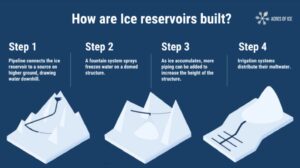
Finance
The project was financed through grants from multiple organizations:
- NABARD: Funding for Igoo and Ayee installations
- Mercy Corps Ventures: Funding for Ursi, Stakmo, and Tuna installations
- I&FC Department: Support for Sakti and Likir installations
- GIZ: Support for drone surveys and measurement campaigns
Total cost for seven villages: ₹81.67 lakh (approximately $98,000 USD) excluding taxes, covering construction and three-year maintenance. Individual site costs average ₹7.5 lakh for construction plus ₹1.5 lakh annual maintenance.
Cost-benefit analysis demonstrated exceptional efficiency at ₹0.23 per liter over three years – approximately 80 times cheaper than conventional water storage solutions like cement tanks (₹15+ per liter) or plastic-lined ponds (₹5-7 per liter).
No private sector financing was utilized; the solution relies on grant funding and funding by Government organisations.
Innovation
The key innovation lies in the world’s first wireless automation system for ice reservoir management. Our breakthrough includes:
- Intelligent Decision Framework: Real-time processing of weather and pipeline parameters through custom algorithms that automatically optimize spray/drain modes while preventing system failure.
- Wireless Control Architecture: Unprecedented 800-meter range for valve operation enabling remote monitoring and SMS-based control across harsh mountain terrain.
- Adaptive Fountain Technology: Custom 3D-printed fountains engineered for specific water availability and temperature scenarios, dramatically improving water use efficiency.
- Year-round Operation Capability: Unlike traditional seasonal ice reservoirs, our system identifies and utilizes cold weather windows even during summer months.
- Scalable Community Integration: Tiered maintenance structure enabling local ownership while maintaining technical sophistication.
This represents the first time ice reservoir technology has achieved automated operation at scale, transforming traditional knowledge into a precision climate adaptation tool suitable for widespread deployment across vulnerable mountain regions globally.
Performance evaluation
A comprehensive evaluation was conducted by the Acres of Ice team during 2024-25 implementation:
Evaluation Criteria:
- Ice volume generation (measured via monthly drone surveys)
- Water use efficiency (ratio of ice formed to water sprayed)
- System reliability (percentage uptime, pipeline freezing events)
- Community impact (household surveys in Igoo and Ursi)
- Cost effectiveness (per-liter water storage costs)
Key Performance Indicators:
- Total ice volume: 184 lakh litres across six measured sites
- Range: 18 lakh litres (Sakti) to 46 lakh litres (Ursi)
- Average water use efficiency: 16% (target improvement to 40% next season)
- System uptime: >90% at most sites
- Cost efficiency: ₹0.23 per liter over three years
Field Data Collection:
- 37 drone surveys between November-April
- Continuous sensor monitoring (temperature, pressure, flow, weather)
- 60 household surveys across two villages
- Real-time dashboard monitoring for four sites
- Photogrammetry-based volume calculations with ground control points
Long term project sustainability and maintenance
Maintenance Activities:
- Monthly inspections by Water Management Committees (13 community members employed)
- Monthly technical team visits for complex issues
- Real-time remote monitoring through cloud services
- Annual system updates and improvements
Duration: Infrastructure is designed for 10+ year lifespan with annual maintenance contracts.
Environmental Monitoring:
- Continuous automated sensor data collection
- Annual drone survey assessments
- Ice preservation monitoring throughout melting seasons
- Water quality assessments at source points
Long-term Ownership: Local Water Management Committees are trained for daily operations with technical support from Acres of Ice. Government partnerships through I&FC Department ensure institutional backing. The community ownership model ensures local investment in system success while technical expertise remains available for complex maintenance and improvements.
Capacities for design and implementation
Knowledge
The solution integrates scientific and Indigenous knowledge systems extensively. Traditional ice reservoir knowledge from pioneers like Chewang Norphel and Sonam Wangchuk provided the foundation, while modern glaciology, engineering, and automation expertise enabled technological advancement.
Scientific research and knowledge components included mass balance modelling for ice formation optimisation, photogrammetry-based volume measurement protocols, automation algorithm development based on field experiment, and comprehensive impact assessment through household surveys.
Community knowledge transfer involved training 13 Water Management Committee members across seven villages, convening technical workshops on system operation and basic troubleshooting, knowledge sharing between villages with different implementation experiences, and documentation of traditional water management practices for integration.
Additionally, academic partnerships with University of Ladakh, King’s College London, and University of Fribourg Switzerland provided ongoing research support and validation.
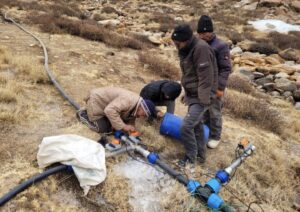
Technology
Technologies were key in the design and implementation of the solution, and essential for achieving automation and scalability. This includes:
- Custom PCB design for harsh high-altitude conditions
- Wireless communication systems operating at extreme ranges
- 3D printing for optimised fountain designs
- Drone-based photogrammetry for precise volume measurements
- Solar power systems adapted for winter conditions
- Real-time data analytics and cloud monitoring
- SMS-based remote control capabilities
Additionally, to engage with and transfer technology to communities, trainings were conducted on basic system operation and troubleshooting, data interpretation and system monitoring, emergency response procedures, equipment maintenance protocols.
Political / Legal
Strong political support enabled the implementation of the solution. For example:
- Executive Councillor for Agriculture, LAHDC Leh launched project tenders
- Irrigation and Flood Control Department provided institutional partnership
- Village governance structures (Nambardar/Sarpanch) provided community mandate
- Government funding through NABARD demonstrated policy alignment
Clear mandates existed through formal agreements with village councils, integration with existing watershed development programs, alignment with state water security priorities, and recognition of traditional water rights and management systems.
Political motivation was demonstrated through high-level government official participation in launches, continued funding commitments across multiple agencies, and integration of the solution with broader climate adaptation strategies.
Institutional
Effective coordination mechanisms were established through multi-stakeholder partnerships (Acres of Ice, I&FC, MCV, NABARD, GIZ) and defining clear roles and responsibilities across implementation phases. There were also regular coordination meetings and progress reviews, and formal agreements outlining partner contributions and expectations.
Local institutional capacity building included establishing a Water Management Committees in each village and implementing training programs for community-based maintenance. The solution was also integrated with existing traditional water management institutions and aided by knowledge transfer protocols between technical and community teams.
The international partnerships provided technical expertise and research validation, funding and implementation support, and knowledge sharing with global mountain adaptation initiatives.
Socio-cultural
Deep community engagement and co-development was fundamental throughout the project. For example, there was extensive consultation and joint decision-making during site selection and system design, participation from communities in the installation processes, and ongoing mechanisms for system improvements. There was also strong youth engagement, particularly in villages like Ayee.
Engagement centred on respect for traditional water management systems and knowledge. Cultural considerations included:
- Recognition of sacred water sources and traditional practices
- Integration with existing community water allocation systems (Chhurpon/Chhures)
- Celebration of water’s spiritual significance in local culture
- Preservation of traditional ice reservoir knowledge while adding modern efficiency
The stakeholder engagement and analysis revealed universal community support for water security improvements and a strong motivation from young community members to learn new technologies. Additionally, it found an alignment with traditional adaptation practices, with no significant opposition to technological integration.
Outlook & Scalability
Barriers and adverse effects
The key barriers encountered were:
- Environmental Challenges: Extreme weather conditions (-22°C), wildlife interference (snow leopard/lynx damage to equipment), difficult terrain access requiring manual equipment transport.
- Technical Obstacles: Pipeline freezing events in extreme conditions, GSM connectivity issues in remote locations, fountain design optimisation challenges.
- Logistical Constraints: Road accessibility during heavy snowfall, equipment transport to high-altitude sites, coordinating maintenance across seven remote locations simultaneously.
Successful strategies to overcome some of these barriers included:
- Transition from horizontal to vertical fountain systems when terrain challenges arose.
- Development of heating cables for drain valves to prevent freezing.
- Establishment of tiered maintenance structure reducing dependency on external technical support.
- Real-time remote monitoring reducing need for physical site visits.
Minimal negative impacts or adverse effects were identified. However, initial concerns included the potential for wildlife habitat disruption (observed animal footprints near installations), energy consumption for automation systems (mitigated through solar power), and the risk of technology dependency reducing traditional knowledge application.
To minimise risks going forwards, the project will continue integrating traditional and modern approaches and developing the capacities of communities to reduce external technical dependency.
Transformation and future outlook
The AIR solution represents a paradigm shift from seasonal, labor-intensive water management to year-round, automated climate adaptation. Key transformational aspects include:
- Scale Achievement: First successful simultaneous operation of ice reservoirs across multiple villages using automated technology.
- Precision Optimization: Transition from intuitive traditional methods to data-driven, algorithmically optimized ice formation.
- Community Empowerment: Technology transfer enabling local communities to manage sophisticated climate adaptation infrastructure independently.
- Replicability Model: Demonstration that traditional knowledge can be enhanced through appropriate technology without losing cultural authenticity.
The solution also addresses accelerating climate challenges through:
- Adaptive capacity: Year-round operation capability enabling response to shifting seasonal patterns.
- Extreme event resilience: Automated systems capable of identifying and utilising brief cold weather windows during increasingly unpredictable climate conditions.
- Scalability framework: Proven model ready for expansion across Hindu Kush Himalayas, Andes and Central Asia.
Planned enhancements for climate resilience include:
- Advanced weather prediction integration for proactive system optimisation.
- Enhanced ice preservation techniques for extending meltwater availability during longer dry seasons.
- Integration with downstream water management (drip irrigation) for complete water cycle optimisation.
Potential for upscaling and replication
Upscaling this solution is highly desirable given demonstrated success and urgent global need. Over 14,000 glacial-fed villages across Hindu Kush Himalayas and Andes could benefit from AIR technology.
Requirements for upscaling include:
- Technical capacity: Standardized system designs, local technician training programs, simplified installation protocols
- Financial mechanisms: Blended finance models, government policy integration, carbon credit potential.
- Institutional framework: Multi-country coordination mechanisms, knowledge sharing platforms, standardised evaluation metrics.
- Community participation: Cultural adaptation protocols, traditional knowledge integration, local leadership development.
The solution aligns with and is already being integrated in broader adaptation strategies. For example, it is currently being considered for inclusion in Ladakh’s regional adaptation planning; it aligns with India’s National Action Plan on Climate Change water security objectives; it supports the Sustainable Development Goal targets for mountain communities; and there is potential for inclusion in international climate finance mechanisms.
In 2025-26, the solution will be implemented in Nepal, Peru, and additional Indian regions (Kargil, Zanskar, Spiti), aiming for 30 AIR installations by winter 2025-26. It also has high global potential, with technical feasibility demonstrated for Hindu Kush Himalayas (12,400 villages) and Andean regions (1,600+ villages). This can be further enabled through active knowledge sharing via academic partnerships, international mountain adaptation networks, and policy forums.
Although currently funded through grants from government agencies and development organisations, future scaling will require expanded funding mechanisms to support the planned growth to 30 installations by 2025-26 and eventual global implementation across 14,000+ potential villages.
- Automated Ice Reservoir (AIR) Campaign 2024-2025
- Using Unmanned Airborne Vehicles (UAV) for glacier monitoring in the Himalayas
- Himalayan Adaptation, Water and Resilience (HI-AWARE) Research on Glacier and Snowpack Dependent River Basins for Improving Livelihoods
- Community-Based Flood and Glacial Lake Outburst Risk Reduction in Nepal
- Sustainable watershed management in glacial mountain ecosystems in Peru
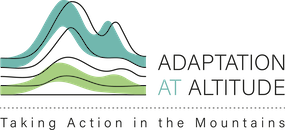





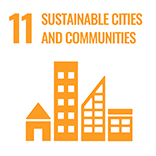
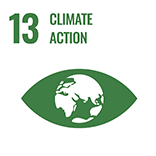
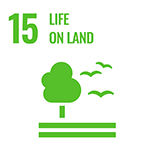
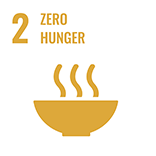
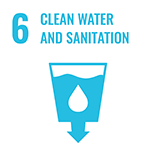
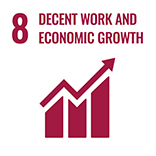

Comments
There is no content